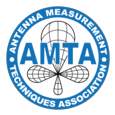Francesco D'Agostino, Flaminio Ferrara, Claudio Gennarelli, Rocco Guerriero, Massimo Migliozzi, November 2016
Among the near-field–far-field (NF–FF) transformations, that adopting the spherical scanning is particularly interesting, since it allows the complete antenna pattern reconstruction and avoids the error due to the scanning zone truncation. The classical spherical NF–FF transformation [1] has been modified in [2] by exploiting the spatial quasi-bandlimitation properties of the electromagnetic (EM) fields [3]. In particular, the choice of the highest spherical wave has been rigorously determined by these properties instead to be fixed by a rule-of-thumb related to the minimum sphere enclosing the antenna under test (AUT). The nonredundant sampling representations of the EM fields [4] have been properly applied to develop effective NF–FF transformations, requiring a number of NF data remarkably lower than that needed by the classical transformation [1] when considering nonvolumetric antennas. In particular, a quasi-planar AUT has been modelled by an oblate ellipsoid [2] or by a double bowl [5], whereas a long AUT has been shaped by a prolate ellipsoid [2] or by a cylinder with two hemispherical caps (rounded cylinder) [5]. Unfortunately, for practical constraints, it is not always possible to mount the AUT in such a way that it is centred on the scanning sphere centre. In such a case, the number of NF data needed by the classical NF–FF transformation [1] and the related measurement time can considerably grow, due to the corresponding increase of the minimum sphere radius. To overcome this drawback, a new spherical NF–FF transformation has been recently proposed in [6], by developing a properly modified version of the spherical wave expansion, wherein the spherical wave functions are defined with respect to the AUT centre instead of the scanning sphere one. Although the number of needed NF data is drastically reduced with respect to that fixed by the rule of the minimum sphere radius, it results to be slightly greater than the one corresponding to a centred mounting. Aim of this work is to properly exploit the nonredundant representations of EM fields to develop a nonredundant spherical NF–FF transformation for long antennas, based on rounded cylinder modelling, which requires the same number of NF data in both cases of centred and offset mounting of the AUT. It will be so possible to remarkably reduce the number of NF data and the related measurement time with respect to that required by the approach [6]. [1] J. Hald, J.E. Hansen, F. Jensen, and F.H. Larsen, Spherical near-field antenna measurements, J.E. Hansen, (ed.), London, Peter Peregrinus, 1998. [2] O.M. Bucci, C. Gennarelli, G. Riccio, and C. Savarese, “Data reduction in the NF–FF transformation technique with spherical scanning,” Jour. Electromagn. Waves Appl., vol. 15, pp. 755-775, June 2001. [3] O.M. Bucci and G. Franceschetti, “On the spatial bandwidth of scattered fields,” IEEE Trans. Antennas Prop., vol. AP-35, pp. 1445-1455, Dec. 1987. [4] O.M. Bucci, C. Gennarelli, and C. Savarese, “Representation of electromagnetic fields over arbitrary surfaces by a finite and nonredundant number of samples,” IEEE Trans. Antennas Prop., vol. 46, pp. 351-359, 1998. [5] F. D’Agostino, F. Ferrara, C. Gennarelli, R. Guerriero, and M. Migliozzi, “Effective antenna modellings for NF–FF transformations with spherical scanning using the minimum number of data,” Int. Jour. Antennas Prop., vol. 2011, ID 936781, 11 pages. [6] L.J. Foged, P.O. Iversen, F. Mioc, and F. Saccardi, “Spherical near field offset measurements using downsampled acquisition and advanced NF/FF transformation algorithm,” Proc. of EUCAP 2016, paper 1570229473, Davos, Apr. 2016.
